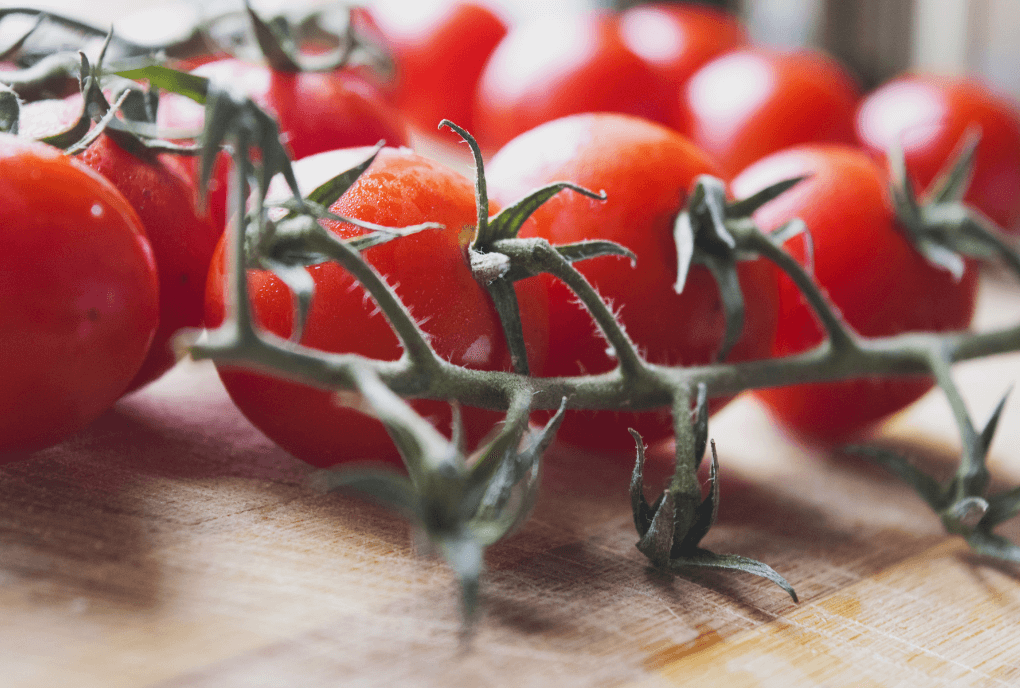
Pachino and its surroundings: not only tomatoes
Pachino is a small town of twenty-one thousand inhabitants, near Syracuse, right in the center of an area that, from an artistic and cultural point of view, is considered one of the centers of Sicilian Baroque.
The tomato that looks like a cherry
The name “Pachino” is derived, not surprisingly, from the Greek “Pachys” and means “abundant” o “fertile“; in fact, the country of the same name is internationally known precisely for its abundance of Ciliegino tomato crops, called not surprisingly “Pachino Cherry“.
It is a very small, extremely sweet tomato that is very similar to cherries, from which it therefore gets its name.
This variety can be recognized among all others not only by its appearance, which resembles cherry clusters, but especially by its taste: the pachino is so tasty that you can eat it without seasoning!
The Ciliegini, in fact, precisely because of the peculiarities that distinguish them and the close connection with the characteristics of the territory of origin have obtained the recognition of the PGI quality mark (Protected Geographical Indication).
Today, therefore, the authentic Pachino tomato is protected by a special distinctive trademark that is based on a precise founding specification.
Wines and Cotton
Pachino is undoubtedly based on a type of agricultural economy, which goes far beyond the production of cherry tomatoes. The area around the town, is rich in cotton and especially vine plants. It is precisely the latter that has been, and still is, a great resource for the export of grape must and wines, to northern Italy and even some places in France.
A touch of flavor from Marzamemi
Another famous production of the area surrounding the town of Pachino is that of Bluefin tuna botargo. This food, with a strong and unique flavor, is produced near Marzamemi and is also known as the “mediterranean caviar”. Bottarga is obtained from the ovarian sac of tuna, and its processing technique has three main steps: Very slow pressing, salting and drying.

The food can be eaten au naturel, making it into very thin slices seasoned with olive oil and lemon juice, which serves to dampen the salty taste of the dish.
When grated, however, Bottarga becomes the ideal condiment for pasta dishes. It is precisely she who gives all fish-based sauces that extra touch, capable of pleasing anyone looking for strong yet distinctive flavors.
Greece, baroque and chocolate
The whole area surrounding the town of Pachino, is one of the most chosen destinations especially by international tourism.
Travelers prefer it not only for the culinary delights it has to offer, but also for its proximity to other small “hearts” of Sicilian art and culture, such as Noto, Modica and Syracuse.
Noted is a small cultural center inside which you can really breathe Baroque air. Its cathedral, in fact, is often chosen as a location for important weddings or photo shoots, precisely because it manages to show, in its beauty, almost all the peculiarities of Baroque art.
Modica, also Baroque, is a town within which art and culture are inextricably mixed with an emblematic food of Trinacria: the chocolate of Modica o “Black Gold of Sicily“.
Why is this delicacy different from classic chocolate? Simple, during its production the melting process is omitted, so the sugar and cocoa butter remain separate.
Last but not least, in the Sicilian area of the southeastern coast we have Syracuse.

It is one of the oldest cities in Sicily, founded in the classical age and known throughout the world for its unbreakable connection with Greek culture. There, one can indeed admire the splendid theater, which is still very active, and also the famous Ear of Dionysus. Two emblems of the passage of the very ancient Hellenic civilization and the influences of their conquests on our beautiful island.
Giada Saglimbeni





